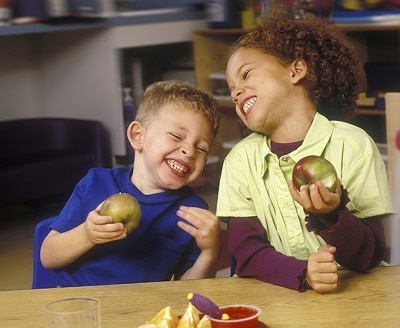Improving the Nutrition Environment Through Changing Concession Stand Options: Eight Steps to Making Healthy Improvements
University of Iowa Prevention Research Center

A Prevention Research Center Tool Showing Evidence of Effectiveness
OVERVIEW
The Concession Stand Tool Kit helps booster clubs or parent groups fight childhood obesity by making positive changes to the unhealthy foods offered at school concession stands. The guide includes information and worksheets to help groups set goals, decide on changes they want to make, create a purchasing plan, understand how changes may affect profits, test the impact of changes, track sales, advertise, and evaluate the success of the program. Giving the local community the opportunity to share their ideas for concession stand foods contributes to their success.
Reforming concession stands is more effective when it involves the local community by giving the affected people opportunities to share their ideas. This tool kit includes a sample survey to give to students, parents, and school staff and faculty before changing the concession stand options. Their survey responses can guide which new foods the stand will sell.
RESEARCH RESULTS
A pilot study showed that introducing healthier items at concession stands did not result in less income per game in following years. As customers learned about the new food options, sales of these foods grew, bringing in 9.2% of total income for added items and 25.5% for modified items. In addition, parents expressed greater satisfaction with the types of foods offered.1
TOOL LOCATION
http://www.public-health.uiowa.edu/prc/ConcessionStandToolkit/ConcessionStandToolkit2015.pdf [PDF – 7.41MB]
Download the printable PDF version [PDF – 645 KB] of this web page
- Laroche HH, Ford C, Hansen K, et al. Concession stand makeovers: A pilot study of offering healthy foods at high school concession stands. J Public Health. 2014;37(1):116–124.